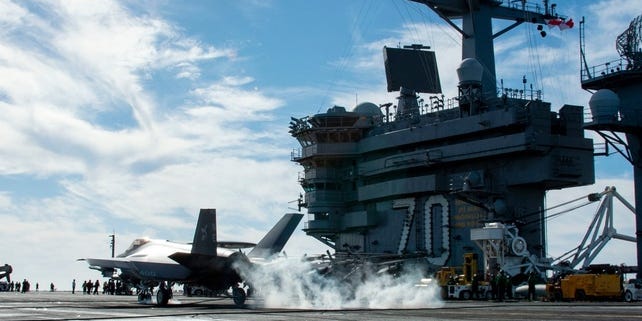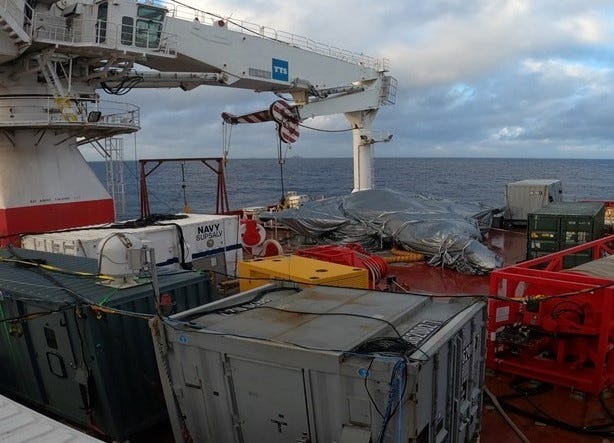
- The US Navy has fished a sunken F-35C stealth fighter jet out of the South China Sea.
- The jet crashed on January 24 while conducting routine flight operations.
- Recovering the plane was a priority given the sensitive nature of the advanced technology and the location of the crash.
The US Navy has managed to recover a sunken F-35C stealth fighter jet from the South China Sea a little over a month after it crashed on the deck of aircraft carrier USS Carl Vinson and fell into the sea.
The carrier-based fifth-generation fighter jet crashed on January 24 while conducting routine flight operations, according to the Navy, which initially characterized the incident as a "landing mishap."
The wrecked aircraft was recovered from a depth of 12,400 feet by a team from 7th Fleet and Naval Sea Systems Command using the diving support construction vessel (DSCV) Picasso and a CURV-21 unit, which is a remotely operated vehicle that attached rigging and lift lines to the aircraft, the Navy said in a press release.

In the days that followed the incident, a photo of the F-35 after the crash appeared online. Then, a video was leaked showing the plane crash on the deck of the Carl Vinson, burst into flames, and slide across the flight deck and into the sea. The Navy confirmed the authenticity of these visuals.
—Fighterman_FFRC (@Fighterman_FFRC) February 6, 2022
The cause of the crash, which injured seven service members including the pilot, remains under investigation. The ship was ready to fight again within about 30 to 45 minutes of the incident.
Cmdr. Guy Snodgrass, a former US naval aviator and TOPGUN instructor, previously told Insider it's impossible to tell from the video whether the crash was due to human error or a technical malfunction.
"The one thing we know is certainly true is that for whatever reason, the pilot or the airplane got too low on the approach, and that's what caused the ramp strike," Snodgrass said, adding that it is likely a slow airspeed contributed to the crash.
While it is common practice for the US military to take steps to retrieve its assets in these situations, experts said retrieving the plane as soon as possible would likely be a priority given the sensitive nature of the advanced technology on the aircraft. It was argued that the Navy needed to recover it before a foreign power like China could get its hands on it.
"There's a huge opportunity for the Chinese if they were able to get a copy of an actual F-35 to reverse-engineer its features, which they can't do just based on the intelligence gathering they've conducted," Bryan Clark, a former US Navy submarine warfare officer and defense expert at the Hudson Institute, previously told Insider.
"Maybe the bigger concern is if they got ahold of an actual F-35, it would help them to figure out how to better counter it," he continued.
The Navy said it took 37 days from the time of the incident to recover the aircraft, which will be delivered to a military installation in the area for further investigation and evaluation.